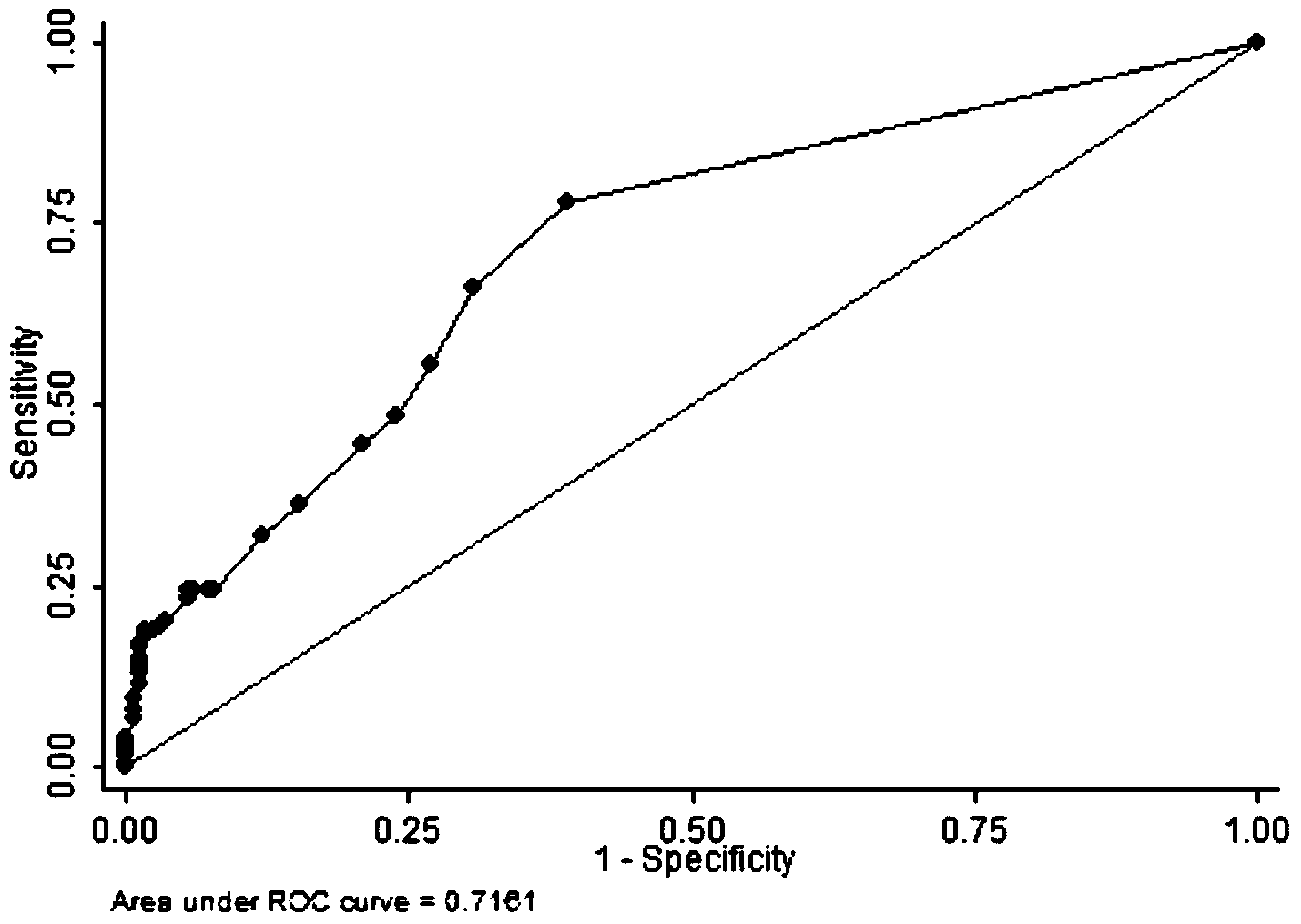SNP marker of mitochondria DNA related to asthenospermia with unknown clinical causes and application thereof
An asthenospermia and marker technology, applied in the fields of genetic engineering and reproductive medicine
- Summary
- Abstract
- Description
- Claims
- Application Information
AI Technical Summary
Problems solved by technology
Method used
Image
Examples
Embodiment 1
[0064] Example 1 The collection of samples and the arrangement of sample data
[0065] The inventor collected a large number of blood samples from patients with asthenozoospermia of unknown clinical cause from June 4, 2007 to January 2011, and selected 1724 Samples that meet the following criteria for whole-genome microarray scanning and single-SNP SNaPshot genotyping experimental samples:
[0066] 1. Repeated semen quality test, diagnosed as asthenozoospermia;
[0067] 2. Normal sexual function; exclude patients with known etiologies such as cryptorchidism, orchitis, vas deferens obstruction, vasectomy, polychromosomal abnormalities, and microdeletions of Y chromosome azoospermia factor;
[0068] 3. Healthy male controls matched with the age of the cases.
[0069] The demographic data and clinical data of these samples were collected systematically.
Embodiment 2
[0070] Example 2 Whole Genome Scanning of SNPs in Peripheral Blood DNA
[0071] Among the above-mentioned eligible 236 patients with asthenozoospermia of unknown clinical cause and 234 healthy male controls, the two groups were age-matched. The two groups of people were sequenced by Illumina to obtain relevant results. The specific steps are:
[0072] 1. Add hemolysis reagent (that is, lysate, 40 parts) to the blood cells stored in the 2ml cryopreservation tube. Dilute to 2000ml, the same below), invert and mix completely before transferring.
[0073] 2. Removal of red blood cells: Fill the 5ml centrifuge tube to 4ml with hemolysis reagent, mix by inverting, centrifuge at 4000rpm for 10 minutes, and discard the supernatant. Add 4ml of hemolysis reagent to the precipitate, invert and wash again, centrifuge at 4000rpm for 10 minutes, and discard the supernatant.
[0074] 3. Extract DNA: add 1ml of extract solution to the precipitate (each 300ml contains 122.5ml 0.2M sodium c...
Embodiment 3
[0084] Example 3 SNaPshot Genotyping of Single Genetic Variations
[0085] The SNPs found to be associated with the onset of clinically unexplained asthenozoospermia in the above genome-wide scan were detected in another 688 clinically unexplained asthenozoospermia cases and 566 healthy male controls. The specific steps were as follows:
[0086] 1. Add the hemolysis reagent to the blood cells stored in the 2ml cryopreservation tube, mix it upside down and transfer it completely.
[0087] 2. Removal of red blood cells: Fill the 5ml centrifuge tube to 4ml with hemolysis reagent, mix by inverting, centrifuge at 4000rpm for 10 minutes, and discard the supernatant. Add 4ml of hemolysis reagent to the precipitate, invert and wash again, centrifuge at 4000rpm for 10 minutes, and discard the supernatant.
[0088] 3. Extract DNA: Add 1ml of extract solution and 8μl of proteinase K to the precipitate, fully oscillate and mix on a shaker, and bathe overnight at 37°C.
[0089] 4. Remove...
PUM
 Login to View More
Login to View More Abstract
Description
Claims
Application Information
 Login to View More
Login to View More - R&D
- Intellectual Property
- Life Sciences
- Materials
- Tech Scout
- Unparalleled Data Quality
- Higher Quality Content
- 60% Fewer Hallucinations
Browse by: Latest US Patents, China's latest patents, Technical Efficacy Thesaurus, Application Domain, Technology Topic, Popular Technical Reports.
© 2025 PatSnap. All rights reserved.Legal|Privacy policy|Modern Slavery Act Transparency Statement|Sitemap|About US| Contact US: help@patsnap.com



